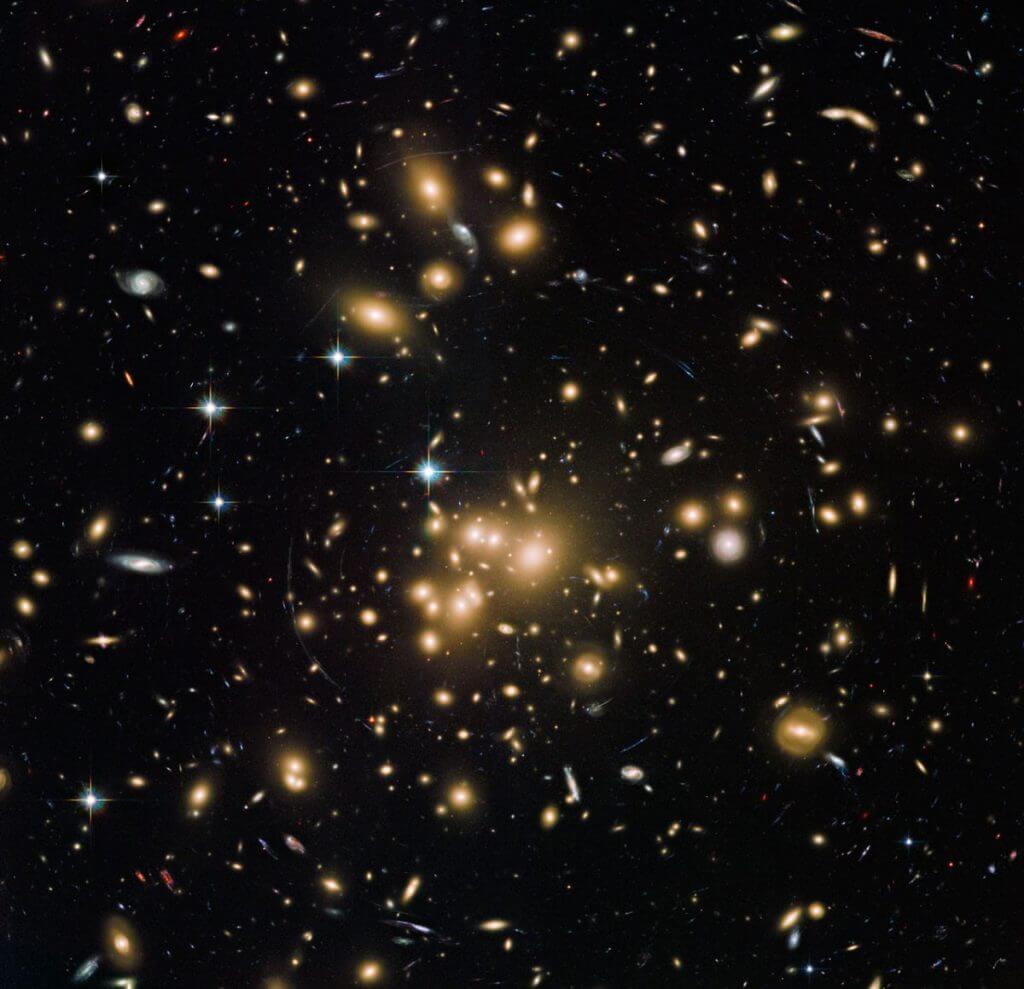
What’s it like inside a massive galaxy cluster? Scientists used 196 lasers to find out. (Image Credit: Space.com)
An Earthbound experiment is replicating the extreme heat found in galaxy clusters located in deep space using nearly 200 lasers.
The hope is the experiment series will reveal more about the conditions within giant groups of galaxies. Here, hydrogen gas can burn at roughly the same temperatures as it does the center of our sun, or roughly 18 million degrees Fahrenheit (10 million degrees Celsius).
Scientists are unsure how these ultrahot conditions can persist within galaxy clusters because the models physicists have built suggest that the gas should have cooled off during the 13.77-billion years the universe has existed.
Related: Hubble Space Telescope spots star cluster glittering in a nearby galaxy (photo)
So a team is investigating these conditions with the most energetic laser facility in the world: the National Ignition Facility at Lawrence Livermore National Laboratory in California. The conditions are created in a dime-sized environment lasting only a fraction of a second, but are a good start to understand more about the galaxy cluster environment, the team says.
“The scientists focused 196 lasers onto a single tiny target, creating a white-hot plasma with intense magnetic fields that exists for a few billionths of a second,” the University of Chicago, a participating institution, said in a statement.
“This was long enough for them to determine that instead of a uniform temperature, there were hot and cold spots in the plasma. This dovetails with one of the theories that has been proposed for how heat is trapped inside galaxy clusters.”

The theory suggests that heat usually distributes as electrons, or charged particles, collide with each other. Within a heated area, however, superheated gas known as plasma has tangled magnetic fields. These fields cause the electrons to spiral along the direction of the magnetic fields, rather than dispersing their energy.
The team found that magnetic fields suppress energy conduction (and dissipation) by a factor of more than 100. “The experiments conducted … are literally out of this world,” lead author Jena Meinecke, a plasma physicist at the University of Oxford in the United Kingdom, said in the same statement.
Team members simulated their experiments prior to using the lab, to make sure they were ready for the nanosecond-scale work with the lasers. That process was important as the experiments in the lab were a one-shot deal and the researchers needed to perform exactly the right measurements within a short timespan, the team said in the statement.
While the new study provides more insight into how these galaxy clusters get so hot, there are more questions to be answered, the statement added.
“Though the hot and cold spots are solid evidence for the impact of magnetic fields on the cooling of the hot gas in galaxy clusters, further experiments are needed to understand exactly what is happening. The group is planning its next round of experiments … later this year.”
A study based on the research was published Wednesday (March 9) in Science Advances.
Follow Elizabeth Howell on Twitter @howellspace. Follow us on Twitter @Spacedotcom or Facebook.








